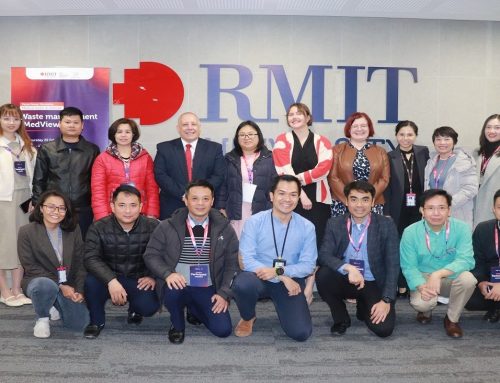Years of sectarian conflict have decimated Yemen’s infrastructure, leaving millions without access to clean water. Waste management services have been halted in major cities, including the capital Sana’a where sewage systems stopped working in April [1]. Half of the healthcare facilities that operated before the war have been shut down and 30,000 healthcare workers have gone unpaid for nearly a year [2]. This already unimaginable environment provides the backdrop for the greatest ongoing cholera outbreak in the world. Though it has only been 15 months since the first infections were discovered in October 2016, there have been over 500,000 documented cases in total, with 5,000 new infections every day [2].
The epidemic in Yemen shares many similarities with the preceding cholera epidemic of its magnitude, which occurred in Haiti seven years ago. After a massive earthquake rocked the small Caribbean country in 2010, cholera was introduced and caused 604,634 infections in the first two years [3]. In both Yemen and Haiti, cholera victims face difficult challenges when travelling to receive care. Similarly, non-governmental organizations (NGOs) may find it difficult to reach everyone in need due to failing or collapsed transportation infrastructure. Just as humanitarian aid primarily entered Haiti by ship at Port Au-Prince, aid to Yemen will most likely pass through one of the country’s four sea-ports. From there, NGOs face several challenges in the ‘last-mile’ as Yemen hosts no rail structure and its largest airport (in Sana’a) is closed [1]. Thus, aid must be moved using trucks on roads of questionable integrity and safety.
There do exist some striking differences between the epidemics in Yemen and Haiti, however. While the number of infections in Yemen is on pace to surpass those in Haiti, Yemen has suffered significantly fewer deaths. In the first two years of the outbreak, 7,436 people died of cholera in Haiti [3] (1.2% mortality) while only 2,000 have perished in Yemen [1] (0.4%). Thus, greater than 99% of cholera victims in Yemen who can access health services survive the infection [2]. Given the relatively low mortality rate, it seems that the majority of Yemen’s cholera victims have been able to reach treatment. However, 54% of Yemenis (15 million) do not currently have access to health services [4]. Similarly in Haiti’s epidemic, many people were unable to access treatment because facilities were too far away [5]. However, where Haiti’s population is 10.8 million within 27,750 km2, Yemen is home to 27.8 million spread across 527,970 km2. The propensity for insufficient access is even greater in Yemen given a population that is 2.5 times larger in a region that is 19 times more expansive.
The response in Yemen provides an excellent opportunity to apply the hard lessons learned in Haiti. While the full scale of the response remains unclear, WHO has established at least 47 facilities with the capability to treat serious cases [2]. There are also hundreds of community-level oral rehydration points equipped to treat mild and moderate cases. In Haiti, a lack of inter-organizational coordination contributed to sub-optimally located facilities. Facilities generally gravitated toward densely populated areas where demand was highest. This pattern caused disproportionate mortalities in rural areas where residents were isolated from care [5]. In Yemen, 65% of the population (18.5 million) live in rural communities [6]. Therefore, the epidemic in Yemen provides a crucial opportunity to learn from the past. In order to reach so many people, spread across such a vast region, facility locations must be chosen strategically. Fortunately, the literature provides valuable tools to optimize facility locations according to objectives to include efficiency and equity [7], [8]. Models have specifically been developed to capture the dynamic, uncertain nature of complex disasters [9], [10].
Another factor that logisticians ought to consider is decisions made at the beneficiary level. During an epidemic, each cholera victim chooses the facility at which he/she will receive service and travels to it. In aggregate, these decisions determine the spatial distribution of demand, which directly impacts access to care. Where in Haiti, facility selection may have been influenced by perceptions of varying service quality, the ongoing conflict in Yemen may drive decisions based upon providers’ perceived ethnic or military affiliations. Therefore, resource allocation decisions should be based around demand forecasts that incorporate such preferential behavior. Game theory provides a structured manner in which to model beneficiaries’ decisions [11], [12]. A benefit of this approach is that coordination mechanisms may be designed that align what is best for the Individual with what is best for the system. In practice, incentives may guide individuals’ decisions toward what is best for the system as a whole. So far in Yemen, local and mass messaging campaigns from WHO and UNICEF have reached 2 million people with important cholera information [13]. Perhaps future messaging can impart facility locations and capacities so that beneficiaries make facility choices that reflect what is best for the system as a whole.
When resources are scarce, logistics decisions that align supply and demand become even more imperative to prevent suffering. On the supply side, mathematical modeling offers optimized facility location decisions that maximize accessibility. On the demand side, game theory has proven valuable to modeling beneficiary behavior with the goal of forecasting demand, and incentivizing beneficiary decisions that improve overall accessibility. The ongoing epidemic in Yemen provides an excellent opportunity to demonstrate the value of lessons learned in Haiti. With millions more lives at stake, in an even more austere environment, logistics decisions will play a crucial role in defining Yemen’s future for years to come.
To contact Luke: lukemuggy@gmail.com
Works Cited
[1] S. Almosawa, B. Hubbard, and T. Griggs, “‘It’s a Slow Death’: The World’s Worst Humanitarian Crisis,” New York Times, 23-Aug-2017.
[2] World Health Organization, “Cholera count reaches 500,000 in Yemen,” News Release, 14-Aug-2017. [Online]. Available: http://www.who.int/mediacentre/news/releases/2017/cholera-yemen-mark/en/.
[3] E. Barzilay et al., “Cholera Surveilance during the Haiti Epidemic – The First 2 Years,” The New England Journal of Medicine, vol. 368, no. 7, pp. 599–609.
[4] Health Systems Global, “REBUILDING YEMEN’S HEALTH SYSTEM AFTER CONFLICT: ENGAGING THE YEMENI DIASPORA,” 09-May-2016. [Online]. Available: http://www.healthsystemsglobal.org/blog/116/Rebuilding-Yemen-s-Health-Sy….
[5] A. Page et al., “Geographic distribution and mortality risk factors during the cholera outbreak in a rural region of Haiti, 2010-2011,” PLOS Neglected Tropical Diseases, vol. 9, no. 3, 2015.
[6] World Bank, “World Bank – Rural Population,” 2017. [Online]. Available: https://data.worldbank.org/indicator/SP.RUR.TOTL.ZS?locations=YE.
[7] B. Balcik and B. Beamon, “Facility location in humanitarian relief,” International Journal of Logistics: Research and Applications, vol. 11, no. 2, pp. 101–121, 2008.
[8] A. Döyen, N. Aras, and G. Barbarosoğlu, “A two-echelon stochastic facility location model for humanitarian relief logistics,” Optimization Letters, vol. 6, no. 6, pp. 1123–1145, 2012.
[9] F. Salman and E. Yücel, “Emergency facility location under random network damage: Insights from the Istanbul case,” Computers and Operations Research, vol. 62, pp. 266–281, 2015.
[10] L. Muggy and J. Heier Stamm, “Dynamic, robust models to quantify the impact of decentralization in post-disaster health care facility location decisions,” Operations Research for Health Care, vol. 12, pp. 43–59, 2017.
[11] L. Muggy and J. Heier Stamm, “Game theory applications in humanitarian operations: A review,” Journal of Humanitarian Logistics and Supply Chain Management, vol. 4, no. 1, pp. 4–23, 2014.
[12] J. Heier Stamm, N. Serban, J. Swann, and P. Wortley, “Quantifying and explaining accessibility with application to the 2009 H1N1 vaccination campaign,” Health Care Management Science, vol. 20, no. 1, pp. 76–93, 2017.
[13] World Health Organization, WASH Cluster, and Health Cluster, “Joint Cholera Response Plan – Yemen – July 2017,” Reliefweb, 29-Jul-2017. [Online]. Available: http://reliefweb.int/report/yemen/joint-cholera-response-plan-yemen-july….




